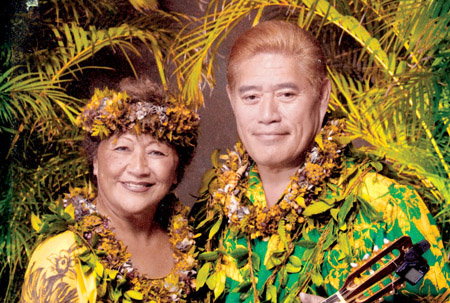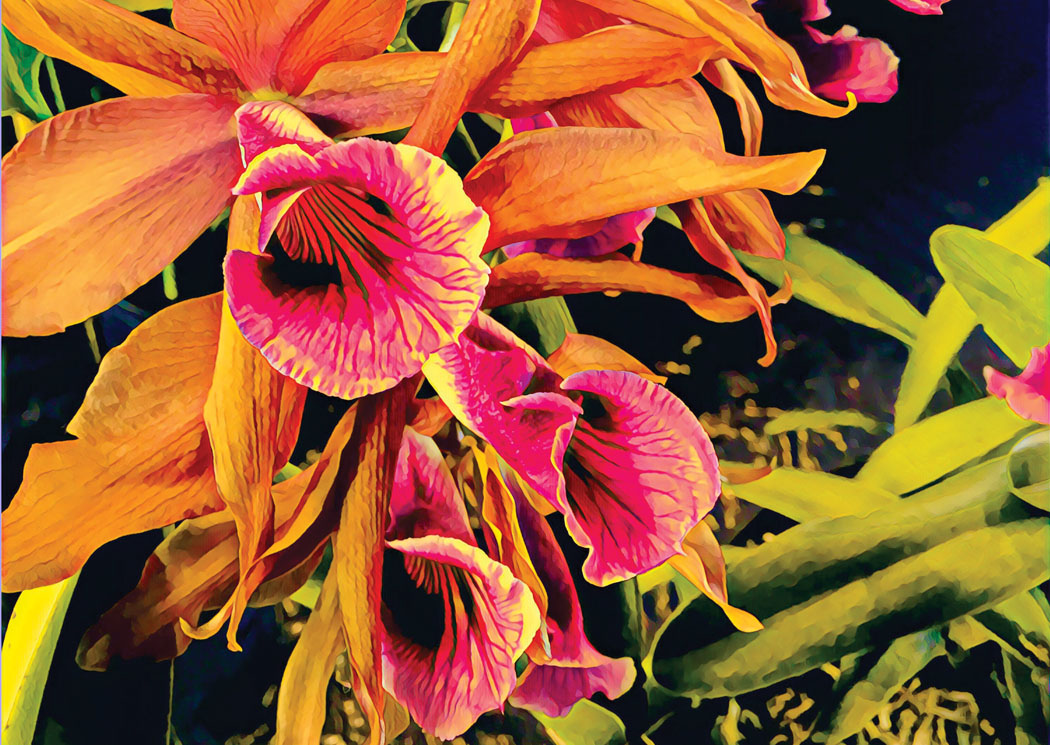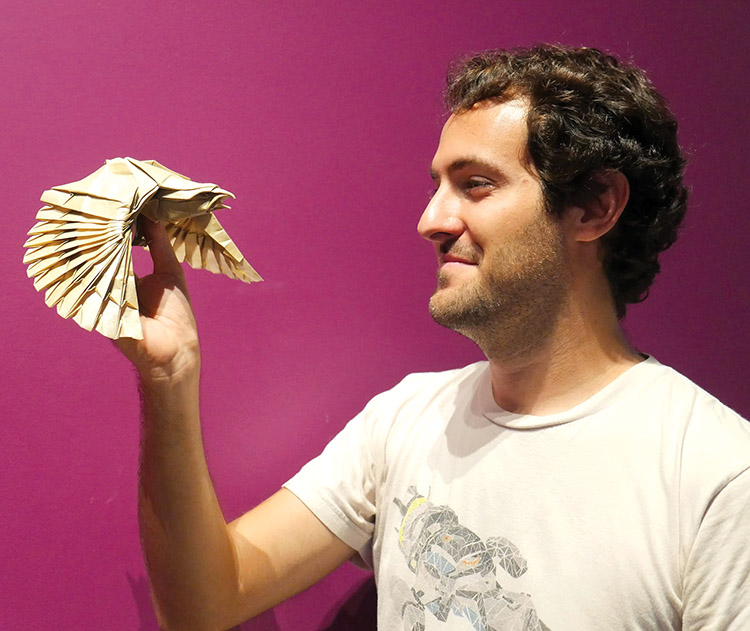
Epic Origami: Folds and Creases for Awareness

By Ma‘ata Tukuafu
In the origami world, there are two types of people: those who follow instructions, and those who create the instructions. Julien Lozi, an astronomer at Subaru Telescope in Hilo, explains how he is considered a “folder” of origami; he follows instructions, yet near the end of the piece, creates his own touches. Julien is part of Epic Origami, a group of origami enthusiasts who have teamed up with Bonnie Cherni to teach audiences about the art of folding, and to bring awareness to the endangered animal species in our world.

Julien became interested in origami when he was ten years old. Introduced through a lunchtime program at his school in France, he took to the art, and his parents bought him a book on origami folding. Life got busy he says, and when he was in college, he began folding again. Studying optics and lasers for his Master’s degree, he realized how much optics and origami were similar; both disciplines require patience, dedication and accuracy.
“There’s a lot of mathematics going into origami,” says Julien. “I like the idea that you can take a simple square of paper and end up with something complicated.”
Epic Origami is the dream of Bonnie Cherni, a longtime resident of Hawai‘i Island. She is the lead artist who collaborates with other origami artists to inspire others. At the age of 15, she discovered John Montroll’s origami books, and delved into the art. After folding her animals with the typical size of 3” squares, 6” squares and 10” squares, she wondered if she could create life-size origami animals. Bonnie is now known for her large scale origami creations. Her favorite moment is when the animal stands up and looks at her.
“I like making bigger animals out of huge 15’x15’ paper. Steven helps me with the complicated steps and I have to crawl inside to create the folds,” Bonnie said.
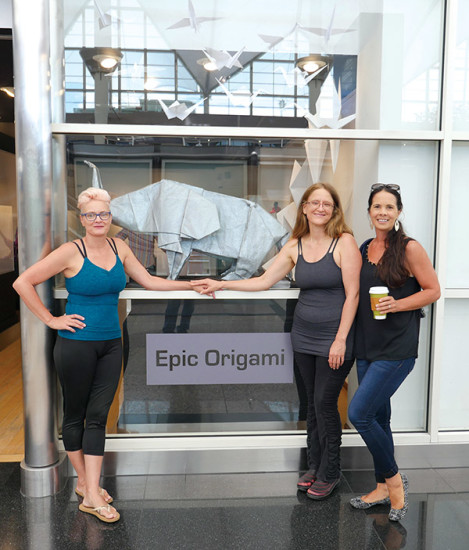
The team of Epic Origami is made up of both local and international artists. Bonnie has attracted these artists by sharing her love of origami with others through teaching events and holding installation exhibits. The local artists include Shannon Nakaya, who runs origamidog.us; Steven Epstein, RedCAT Systems CEO; Julien Lozi, astronomer; and Rod Hinman, robotics engineer. International artists include Nyugen Hong Cyong from Vietnam, and Nicolas Terry from France, both renowned origamists. Also included are John Montroll and Robert Lang; both famous origamists who have inspired many with their books and videos.
For Julien, his introduction to Bonnie occurred when he attended an event at Hilo’s ‘Imiloa Astronomy Center. At the opening of the event, Bonnie was teaching origami to children and Julien showed her some of the work he did. Eventually, their meeting led to his collaboration with her in an exhibit where four of his pieces were shown: an eagle, two different types of bears, and a bee.
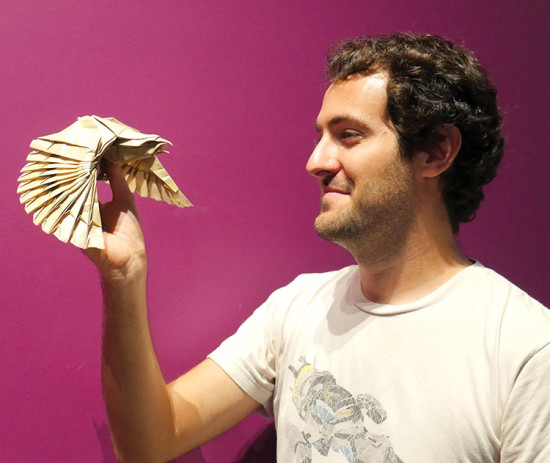
In the astronomy world, Julien has given talks on how origami can help with science and space. As an example, he said rockets going into space are not that big, but must carry large satellites. Origami design helps scientists to create satellite components which expand outward when reaching their destination. Another application he cites is foldable lenses for telescopes, which origami has enhanced.
The Epic Origami team had an exhibit at the Denver Airport from July through November 2017. “I never thought I would have a piece in the Denver Airport exhibition, and I enjoy being part of this collaboration,” Julien says. “There’s a mix of people with different skills and artistic levels with Epic Origami.”
Bonnie’s favorite thing is to combine the geometric and modular shapes that Steven and Rod make, with the organic animal shapes the team folds. There will be another two cases in Terminal A at the Denver Airport that feature animals playing with geometric snowflakes. This show runs through January 2, 2018.
In addition to the origami artists, Bonnie has Tai King and Jennifer Prater on her team to assist with the installations and events. Tai met Bonnie at a dance class in Waimea a few years ago, and they have been friends ever since. Tai says she has no folding skills, yet helps with community outreach programs such as those held at the Kahilu Theatre and Thelma Parker Library in Waimea.
“It’s interesting that there are a lot of mathematicians, engineers and astronomists who are drawn to origami,” Tai says. “Something in the way their brains work, it makes a lot of sense to them.”
Many people have tried folding origami at some time in their life, the simplest of origami gadgets or animals may take 15 or 20 folds. The intricacy of some origami creations can take up to 250 to 300 folds. Tai says the Epic Origami installations have expanded the idea of what art can be.
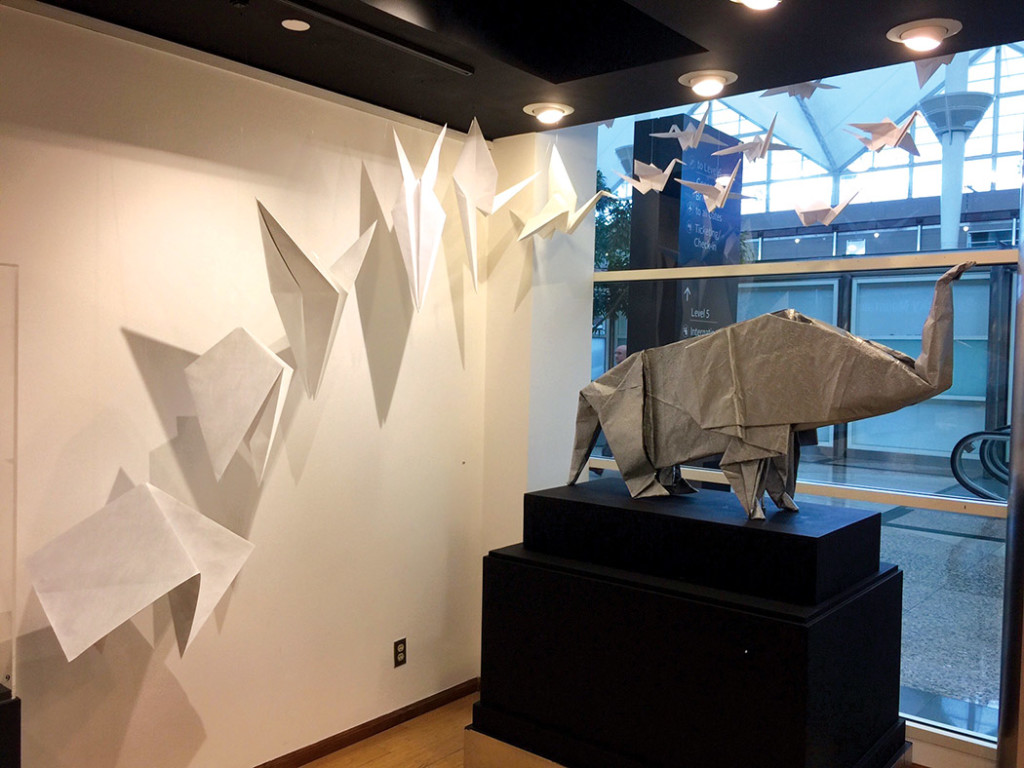
“People haven’t seen origami on this level,” says Tai. “Bonnie has folded larger pieces and dragons while people are there watching. Sometimes she has folded with canvas or metal-backed paper. There’s so much more to origami.”
In preparation for the Denver installation, Bonnie received both large and small boxes in the mail from the folders. Tai and Jennifer hand-carried delicate origami art on their flights to Denver. Tai recalls hand-carrying a folded shark that was too fragile to put in the overhead bin and the flight attendants actually made room in their own compartment to keep the shark intact.
“The day we arrived, we began unpacking all of the boxes to see what we had to work with,” says Tai. “It was like working with pieces of a puzzle; how to angle them, and how to display the art.”
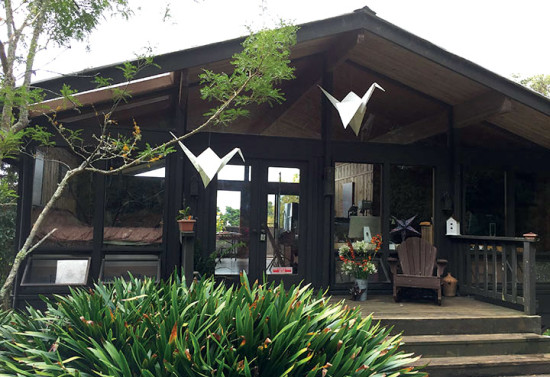
It took three days to set up the installation, and Tai says they would have been lost if they hadn’t received the assistance of the Denver crew assigned to them. The large elephant Bonnie had folded took two men to lift, and was displayed in the main window. Tai says doing an art installation is not too different from creating a storefront window or designing a home; it is about focus and not being overwhelmed by having it be too cluttered, as well as letting smaller pieces stand alone.
Jennifer says they never knew what they were going to unpack until they arrived for the installation. After installing some origami birds, Jennifer says they were told by the folder from France that the birds were upside down. “The important thing is how to create a 3-D display or to be mindful of the art even if some of the art space was tucked under a stairway,” she says.
“It takes a team to be able to create the vision for the installation, and then to minimize it,” says Bonnie. She feels grateful for people who can “think on their feet,” who can install the origami on the wall, hang it from the ceiling or place animals standing on structures.
“We want our installations to be fulfilling and interesting,” Bonnie says. “We’ve created a business and our reputation is on the line. We have great references and it is a fun project. I’m excited our team feels motivated and they work hard to create this.”
While Bonnie is comfortable using 150 steps in her folds, she says that Julien and Shannon can create designs using 350 steps and more. Bonnie says Julien’s piece in the show was incredible; an intricate eagle folded from one piece of delicate paper. She adds that Shannon makes her own origami patterns. Bonnie is excited about the material the team folders are using and experimenting with: canvas, copper mesh, and adhesive vinyl.
Nicolas Terry, also on the team, provides the folders with beautiful and exotic paper to use. Bonnie says many on the team know by touch alone, what kind of paper they are using. She says Shannon has been experimenting with hand painting paper before she folds it, which brings a whole new dimension to the finished product.
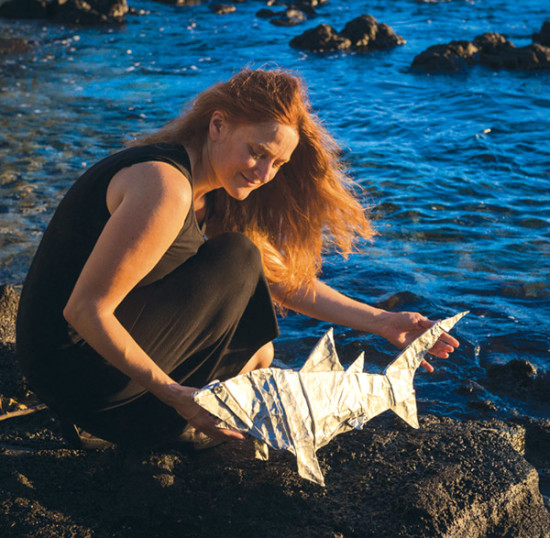
It is Bonnie’s dream to create a 501(c)3 nonprofit status for Epic Origami, and to continue sharing the art and science of what origami can bring to the world.
The team has collaborated with several local venues to share and present their origami art to the public; Waimea’s Thelma Parker Library, Kahilu Theatre, ‘Imiloa, Keck and Fairmont Orchid’s Annual Waimea Ocean Film Festival. Bonnie’s overall goal is for Epic Origami to be an inspiration to people and to create awareness of our animal species with the art of origami.
Epic Origami will teach origami folding at the Waimea Ocean Film Festival from January 1–9, 2018. “Come fold with us,” says Bonnie. ❖
For more information about Epic Origami: epicorigami.com.

